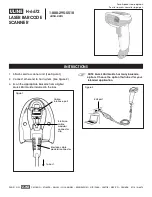
file:///C|/Documents%20and%20Settings/POpitz/My%20Documents/temp/UnidenManBeta/RadioSystemsOverview.html
There are two basic types of radio systems: conventional systems and trunked systems.
●
●
❍
❍
❍
Conventional radio systems
In a conventional radio system, each group of users is assigned one (for simplex systems) or two frequencies (for repeater systems). For example, the
police in your area might operate on 460.500 MHz, the fire department on 154.445 MHz, the highway department on 37.900 MHz, etc. All
transmissions from each group always go out on the on the same frequency--the police won't randomly switch to 500.000 MHz, for instance.
Since each group always stays on the same frequency and frequencies never overlap, it's very easy to follow conversations on conventional systems:
when your scanner stops on a frequency, you usually know who it is, and more importantly, you can stop on a channel and listen to an entire
conversation.
Up until the late 1980s, this was the primary way that radio systems operated. Some examples of conventional radio systems are
●
Aircraft
●
Amateur radio
●
FRS/GMRS users
●
Small, private radio systems
Trunked radio systems
Several major trends have converged that have resulted in agencies moving to more efficient trunked radio systems:
●
Higher levels of radio usage has meant that there arent enough individual frequencies available to allow every group to have their own
frequency.
●
Technology advances have brought down the overall cost and complexity of implementing a trunked radio system while increasing the
features available to the agency and individual radio users.
●
Roll-out of major statewide trunked systems makes it easier for even small agencies to piggy back onto the larger system for less cost than
replacing existing systems.
Trunked system basics
There are three major elements common to most trunked systems:
System Controller
The system controller is a special computer that assigns voice channels to users as they key up their radio. The controller is the brains
behind the trunking system.
Voice Frequency Pool
The voice frequency pool is a selection of radio frequencies available to the system controller for assigning voice traffic. By assigning
voice frequencies to channels only as they are needed, a trunked system can support many more channels than it actually has
frequencies.
Talk Group IDs
A Talk Group ID identifies which user or agency has been assigned a particular voice frequency at any particular moment. The Talk
Group ID is essentially the user's "channel": since each voice frequency is used over and over by all the agencies on the system,
trunked systems rely on the Talk Group ID to identify which particular user or agency is talking.
file:///C|/Documents%20and%20Settings/POpitz/My%20Documents/temp/UnidenManBeta/RadioSystemsOverview.html (1 of 3)4/7/2009 10:08:35 AM
















































